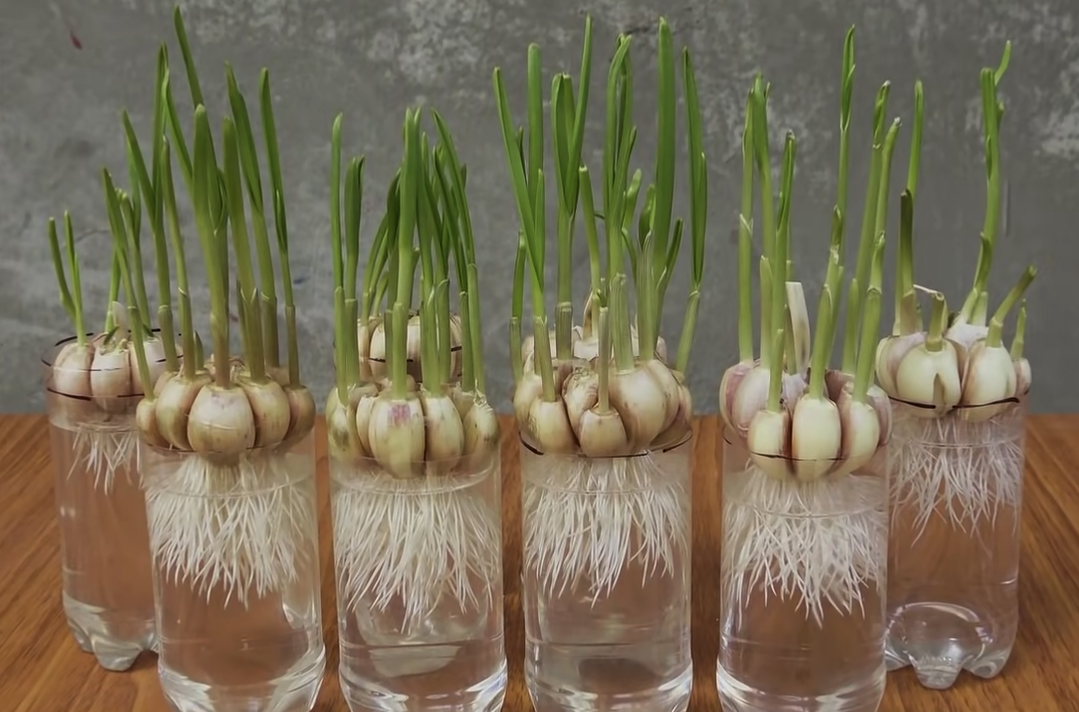Garlic is straightforward to grow, though propagates slowly. With enough plants you can furnish your diet year-round.
Varieties of Garlic
- Softneck Garlic — Milder to eat raw
- Artichoke (common supermarket garlic, long shelf life)
- Silverskin (also common supermarket fare, high-yielding)
- Hardneck Garlic
- Rocambole (most common variety)
- German Extra Hardy (colder weather)
- Porcelain (highest in allicin, best for black garlic)
- Elephant garlic (of the leek family, grows easily in warm climes)
Garlic is a robust plant resistant to cold, and can be grown indoors anywhere, or outdoors in USDA Hardiness Zones 4-8 without issue (guide below). If you live outside these zones, opting for a German Extra Hardy or Elephant varieties can prove more successful. Garlic grown outdoors will be more likely to grow strong heads, while indoor garlic can still be used for its leaves.
Sprouting
- Garlic is best planted from separated cloves, as cloves planted in a bulb may compete for nutrients. Main layer of papery skin should be left on.
- Sprout cloves before they are planted by placing the root-growing end in shallow water, stimulating roots to grow (one method shown below, alternately place individual cloves in a shallow dish).
- Large and firm cloves should be chosen for planting, as they produce stronger plants.
- Garlic has a small root system and does not require much soil.
Planting
- Garlic can be planted year-round, but cloves planted in autumn-spring will be productive more quickly.
- Plant cloves upright in potting mix, a small amount of organic fertilizer.
- Cloves should be planted 2 inches apart.
- Push each clove into the soil about twice the depth of the clove.
- Water generously at first.
Maintenance
- Garlic does not need sun before it grows shoots out of the soil, which may take a matter of months.
- Garlic needs plenty of moisture in early stages, but as they grow taller there’s no need to water before topsoil is dry.
- For garlic planted indoors in the Nothern Hemisphere, leave by a south-facing window (and vice versa).
Harvesting and Storing
- Garlic bulbs will be ready to harvest in late spring or summer, seven to eight months after they are planted.
- Once green leaves begin to turn brown, the whole bulb can be pulled from the ground.
- After harvesting, garlic should be ‘cured’ to maximise storage by hanging them in a place with good ventilation, out of direct sunlight for 2-4 weeks. Curing is complete when bulbs are dry and crispy on the outside, so in humid climates this can take a couple of weeks longer.
- After curing, garlic is best stored at 0 degrees celsius (~32 degrees farenheit). At this temperature garlic can last 6-12 months, depending on the variety and quality of curing. They should be stored as whole bulbs.

